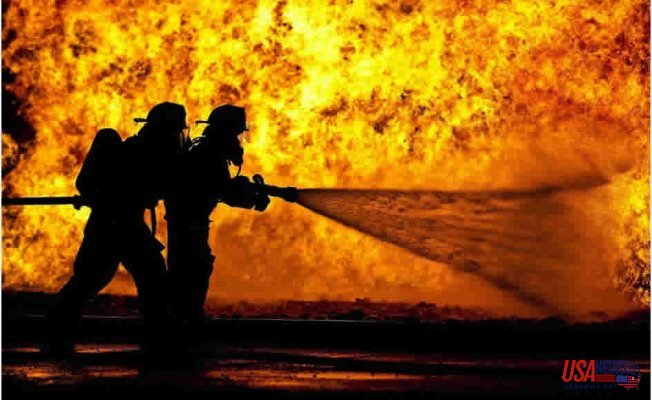Vancouver Fire and Rescue Service is one of the busiest fire departments in Canada, with the Vancouver Courier (See this) reporting that in 2018 they received over 90 callouts per firefighter – compare that to 29-46 in other areas. Although some of this is accounted for by medical emergencies, it is also reported that modern building materials are causing fires to burn faster and hotter, with average escape time reducing from 10 minutes to a mere 3 minutes.
Fire Safety Code
The Vancouver fire safety code is stringent, designed to keep the residence of Vancouver safe. Amongst the regulations are that buildings need to have carbon monoxide alarms installed, fire and exit doors need to function correctly (and self-close), there are limits to the amount of flammable or combustible liquids that can be stored on a property (including gasoline for lawnmowers etc) and access for VFRS must be kept clear at all times.
Fire Alarms
Included in the regulations for fire safety is that “every dwelling unit – new, altered, or existing – must have working smoke alarms”. Many buildings did not have hard-wired smoke alarms when they were built, which may have been allowable under the regulations of the time, however if these buildings are now required to install battery operated smoke alarms; all new buildings and any residential building which consists of multiple units, no matter when it was built, must have smoke alarms that are hard-wired to an electrical circuit.
Upgrading and Installing Fire Alarms
As new technology and research becomes available, fire systems, building, and electrical codes also get updated. You will need to make sure that you can work with a company that is aware of all current codes and compliance standards, and one that can recommend how to best future proof your installation as well.
Upgrading and installing fire alarm systems can be complicated, but if you work with a company that is able to help you work through the pre-planning and design stage step by step this process becomes much easier. You can find useful tips from site like bartecfire.com to help you learn more about planning and compliance of a fire safety system.
Another thing to check, before signing up a company to undertake your install or upgrade, is that they can provide training to staff or residents one how the system operates (what do to if the alarm goes off, how to cope a false alarm, how the system works etc).
Annual Inspections
The fire safety regulations in Vancouver also state that every year an ASTTBC certified technician must undertake an inspection, and tag as inspected, a list of safety systems, including:
- Sprinkler systems
- Fire alarms
- Emergency lighting
- Fire extinguishers
- Automatic extinguishing systems
The company you contract to do the inspections should be able to provide a report that includes details of the inspection outcome, any repairs that are needed, any repairs that may soon be needed, any services that are required, and the results of testing. This should be provided in a timely manner, and should cover (amongst others):
- Fire Alarms
- Emergency Lighting
- Smoke Alarms
- Smoke detector sensitivity
- Extinguishers (manual/portable and automatic)
- Fire Doors
- Sprinkler systems
In some instances, usually for commercial residences, monthly testing may be required.
When you are arranging for an inspection, particularly if this is your first time using a particular company, be sure to tell them all the components of your fire safety system when you call. Fire Protection Technicians are certified in up to 16 different areas, so not all technicians are licensed to undertake inspection of all fire system componentry.
ASTTBC Fire Protection Technician Certification
The ASTTBC is the “Applied Science Technologists and Technicians of British Columba”, and is the organisation responsible for certifying Fire Protection Technicians as qualified to inspect and test systems in both private and commercial buildings.
ASTTBC works through the ASTT Act, and members must follow a Code of Ethics, as well as being qualified and certified in several different specialist areas.
In order to become an ASTTBC certified Fire Protection Technician (FPT), potential members must pass professional practice exams, as well as the ethics exam. This helps guarantee that the standards of training are maintained at a high level, and that the work of ASTTBC certified technicians is reliable and can help keep Vancouver public safe.
Members are also required to undertake continuing professional development to maintain proficiency and competence. This ensures that new developments, new regulations, and new technology are all taken into consideration at the design, implementation and install stages, as well during inspections.
Failing An Inspection
When your FPT completes their annual inspection, they may discover that repairs or maintenance needs to be completed to your fire safety system before they can issue a certificate of inspection. Usually the company will be able to assist with undertaking the repairs and/or maintenance, but you are within rights to seek a second opinion.
What Happens If You Aren’t Inspected?
If you are within a city zone that requires mandatory annual certified fire inspections the VFRS will inspect your property to confirm compliance. If they find that your fire safety systems have not been certified by an ASTTBC certified Fire Protection Technician, a violation notice will be issued to you. You will then need to:
- Complete the work ordered by the fire inspector
- Rebook an inspection from the VFRS
- Pay a re-inspection fee
If you continue to be in breach of the fire safety code legal action may be taken, including the possibility of eviction.












